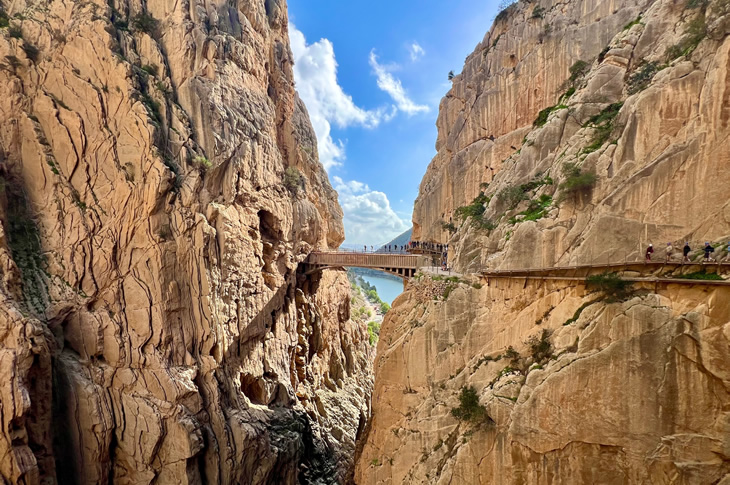Five hiking routes in Spain to make the most of nature
Suspended walkways, canyons, and volcanic trails form part of a network that has established hiking as a first-rate tourist attraction
With over 60 natural and national parks, hiking has become a standout tourism asset in Spain. Across the country, routes combine breathtaking natural landscapes with outdoor experiences tailored to all skill levels, allowing walkers to enjoy this activity in safe and accessible environments. These attractions include everything from suspended walkways to river canyons and volcanic landscapes. Ordesa Valley Route (Huesca): located within the Ordesa and Monte Perdido National Park, this valley presents a 10.6-mile immersive journey through waterfalls, forests, and mountains. The moderately challenging trail is recommended for hikers with some experience and offers up some breathtaking scenery. Flysch Route (Guipúzcoa): this 6.2-mile trail between Zumaia and Deba runs along cliffs with spectacular views of the Cantabrian Sea. The area's geological significance makes it the perfect choice for visitors interested in scientific or educational tourism. Duratón Nature Trail (Segovia): this 12.4-mile route winds through the Hoces del Duratón Natural Park. Along the way, you won’t want to miss the limestone canyons and heritage landmarks, including the Hermitage of San Frutos. Caminito del Rey Trail (Malaga): stretching out over 4.8 miles on suspended walkways in the Gaitanes Gorge, this route offers both accessibility and spectacular views. Due to its popularity, however, advance booking is essential.

Caldera de Taburiente Route (La Palma): This 10-mile circular trail, located in the Caldera de Taburiente National Park, is one of the most iconic walks in the Canary Islands. As they explore this route, hikers will discover volcanic landscapes and forests.

